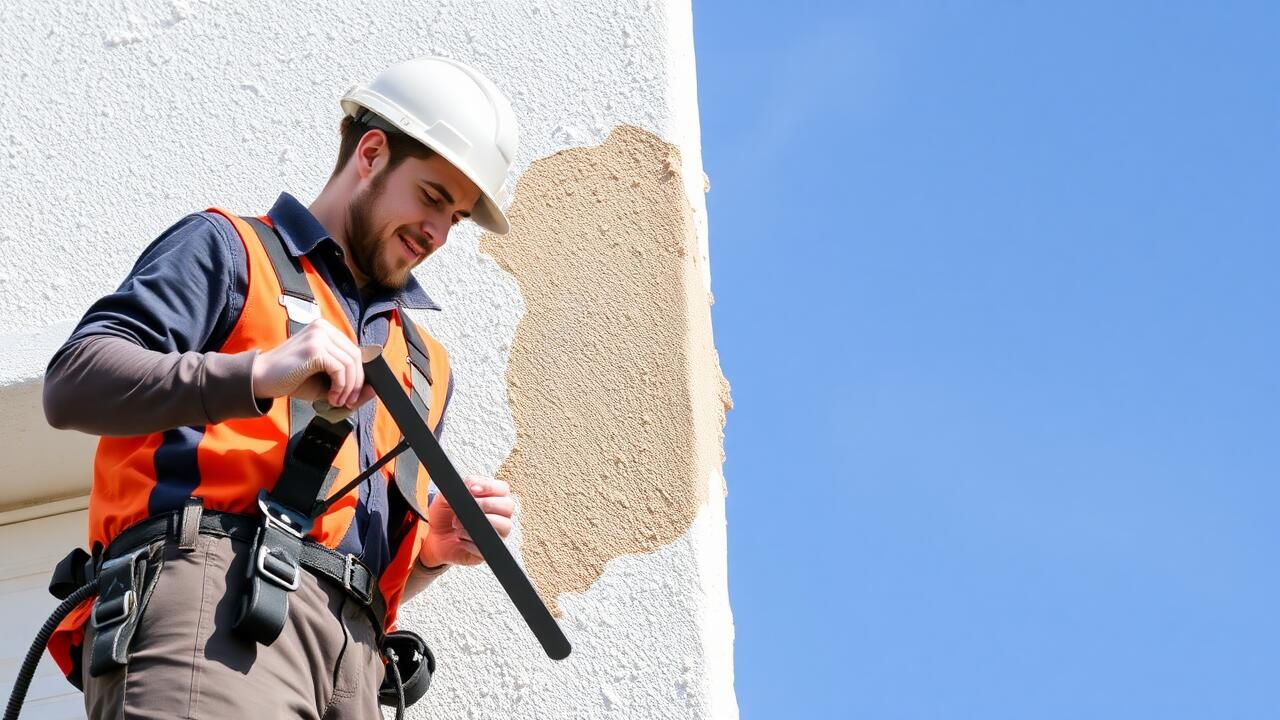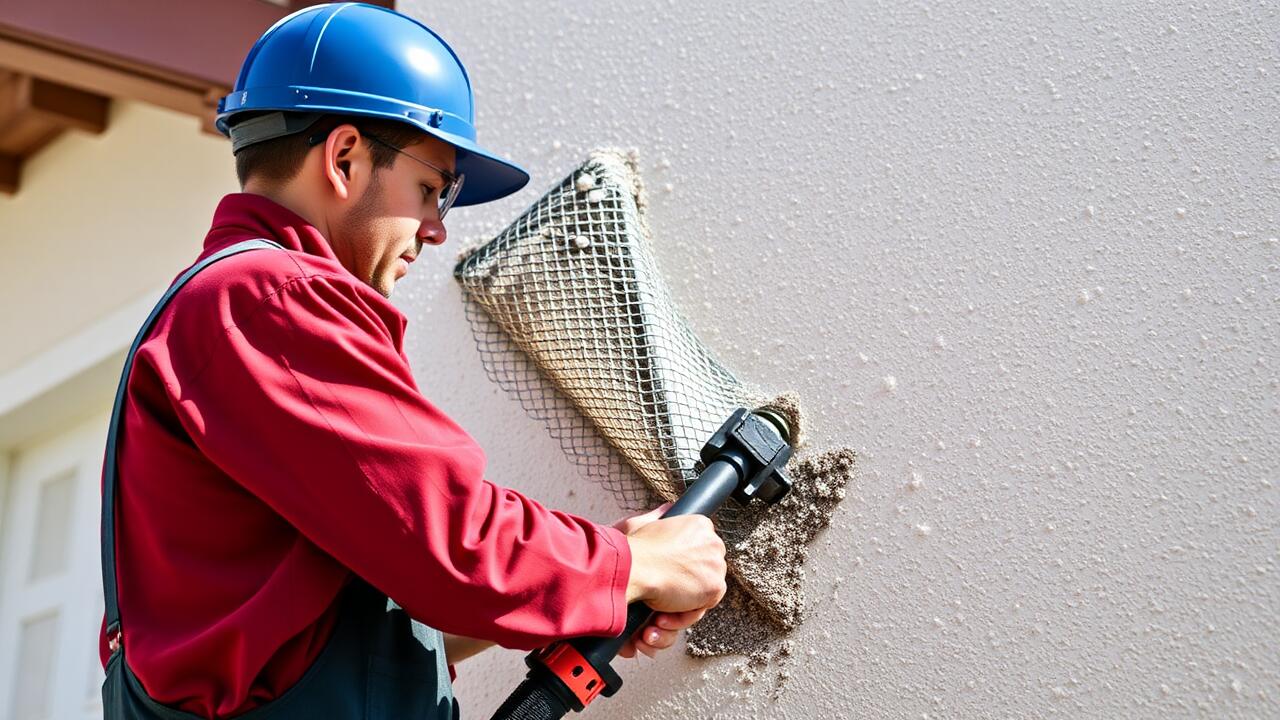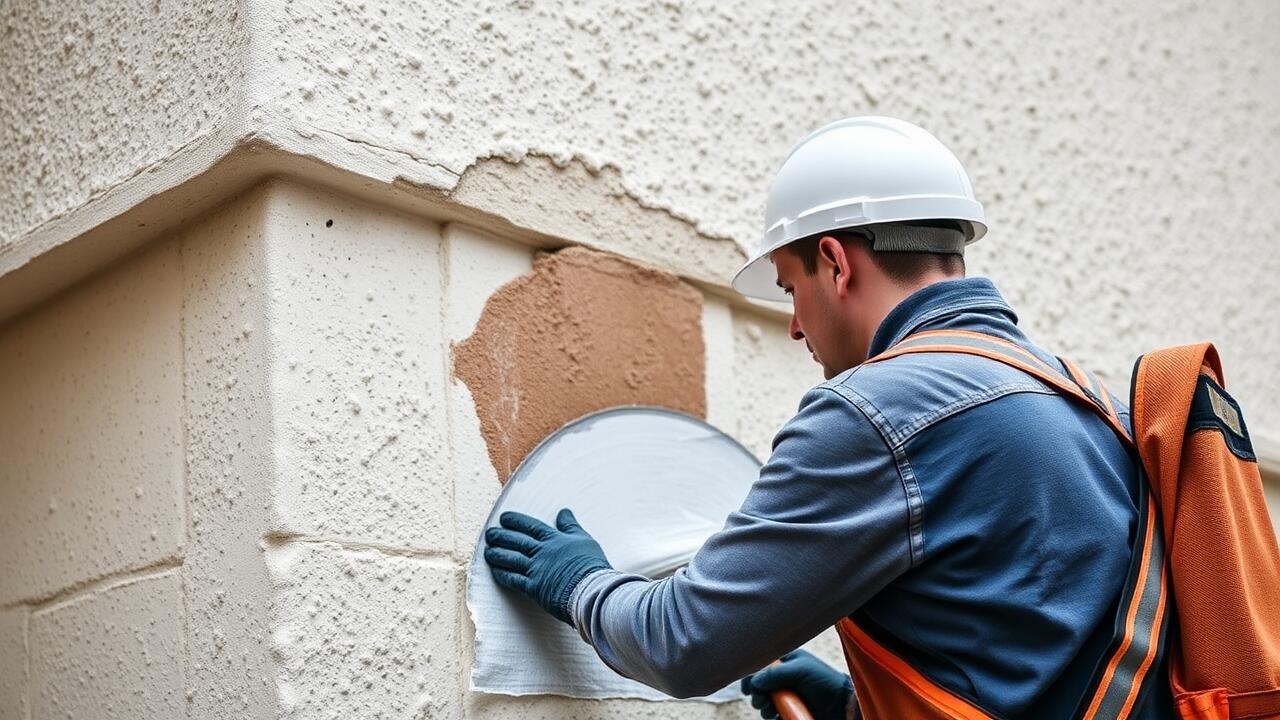
Choosing the Right Paint
Selecting the appropriate paint for stucco surfaces is crucial for ensuring durability and aesthetic appeal. High-quality acrylic-based paints are often recommended due to their flexibility and resistance to fading. These paints can expand and contract with the stucco, preventing cracking and peeling over time. It's essential to consider local climate conditions, as UV exposure and moisture levels can significantly impact the longevity of the paint. Consulting a local expert can provide valuable insights into the best options available for your specific environment, such as those offered by Stucco Repair Crenshaw, Los Angeles.
Another important consideration is the paint's texture and finish. A flat or matte finish may be suitable for hiding imperfections, but it usually requires more frequent maintenance. On the other hand, a satin or semi-gloss finish offers better durability and washes off easily, making it preferable for homes in high traffic areas. Always remember to test a small area before committing to a color choice, as stucco can absorb paint differently than other materials. Engaging with local professionals can help ensure the selected paint aligns with the unique characteristics of stucco surfaces in your neighborhood.
Factors to Consider for Long-lasting Results
When planning to paint stucco surfaces, several factors come into play that can ensure long-lasting results. The climate in your area significantly influences the type of paint you should choose. In places with high humidity or extreme temperatures, a paint formulated specifically for stucco can withstand these conditions better. Also, consider the texture of the stucco, as rough surfaces may require more durable formulations to prevent peeling or fading.
Another crucial aspect is surface preparation prior to painting. Cleaning the stucco thoroughly removes dirt and mildew, which can interfere with paint adherence. If extensive damage is present, it may be beneficial to consult professionals like Stucco Repair Crenshaw, Los Angeles, to address any issues before applying paint. Properly priming the surface enhances the paint’s adherence and longevity, helping to reduce future maintenance efforts.
Applying Primer Before Painting
Before applying the final coats of paint on stucco surfaces, it is crucial to use a primer. Primer helps create a uniform layer that enhances paint adhesion. It fills in the porous texture of stucco, ensuring that the paint doesn’t absorb unevenly. This step is especially important in regions like Los Angeles, where the weather can affect paint performance. The right primer will prepare the surface, making it more receptive to the paint and extending the longevity of the finish.
Choosing the correct primer for stucco can significantly impact the overall restoration process. Various options are available, including acrylic and oil-based primers, each offering different benefits. When considering professional assistance, contacting a local service like Stucco Repair Crenshaw, Los Angeles may provide valuable insights. Proper primer selection and application will lead to improved coverage and a more aesthetically pleasing result.
Importance of Primer in Paint Adhesion
Primer plays a crucial role in ensuring proper adhesion of paint to stucco surfaces. It provides a necessary barrier that helps the paint bond effectively, preventing peeling and flaking in the future. For residents and professionals in the area, skilled services like Stucco Repair Crenshaw, Los Angeles, emphasize the importance of this preparatory step, as it can significantly extend the lifespan of the paint job.
Using a quality primer specifically designed for stucco can greatly enhance the overall appearance and durability of the finish. The right primer not only primes the surface but also seals any porous areas, allowing for better paint coverage. By investing time and resources into primer application, homeowners can achieve a more uniform look and reduce maintenance needs over time, a benefit highlighted by experts in local stucco repair.
Techniques for Painting Stucco
When painting stucco, preparation plays a crucial role in achieving a smooth finish. Start by cleaning the surface thoroughly to remove dirt and loose particles. Power washing is often effective, but care should be taken not to damage the stucco. After cleaning, inspect the surface for cracks or damage, and address these areas before proceeding. For those needing professional assistance, services like Stucco Repair Crenshaw, Los Angeles, can provide the expertise required to restore the texture and integrity of the walls before painting.
Once the surface is ready, choose the appropriate tools for application. A paint sprayer often provides the best coverage, allowing for an even coat that reaches all the nooks and crannies of the textured surface. Brushes and rollers can also be used for precision work in tight areas. When applying paint, it is best to work in sections to maintain a wet edge, ensuring seamless blending between each area. A high-quality, mildew-resistant paint is recommended to enhance durability and maintain aesthetics over time.
Best Practices for Even Coverage
Achieving even coverage on stucco surfaces is crucial for a polished finish. Begin by selecting the right tools for the job, such as a roller specifically designed for textured surfaces. This ensures that paint gets into the nooks and crannies of the stucco. A quality sprayer can also be effective, allowing you to reach difficult angles and corners with ease. Consider working in sections to maintain a wet edge, which helps prevent uneven patches as the paint dries.
After priming the surface, use long, even strokes when applying paint. This technique not only helps distribute the paint evenly but also minimizes the risk of drips or runs. For those in the area, consulting professionals like Stucco Repair Crenshaw, Los Angeles, can provide additional insights and assistance. They can guide you in selecting the right products and techniques to achieve a smooth, uniform coverage that enhances the overall appearance of your stucco.
FAQS
What causes paint to fade on stucco surfaces?
Paint can fade on stucco due to exposure to UV rays, harsh weather conditions, moisture, and the quality of the paint used. Over time, these factors can deteriorate the paint’s pigments, leading to discoloration.
How can I choose the right paint for stucco?
When selecting paint for stucco, consider factors such as durability, weather resistance, and flexibility. Look for specialized exterior paints designed for textured surfaces, and choose a color that complements your home’s aesthetic.
Is primer necessary before painting stucco?
Yes, applying a primer before painting stucco is essential. Primer enhances paint adhesion, helps prevent peeling, and improves the overall finish and longevity of the paint job.
What are some best practices for applying paint to stucco?
To achieve even coverage on stucco, use a high-quality paintbrush or roller designed for textured surfaces. Apply thin, even coats, and allow each coat to dry fully before applying the next. Spraying can also provide a smooth finish if done correctly.
How often should I repaint stucco surfaces?
The frequency of repainting stucco surfaces can vary based on environmental conditions and paint quality. Typically, it’s recommended to repaint every 5 to 10 years or when you notice significant fading, peeling, or damage to the paint.



